Noticed bare areas or yellowing patches on your lawn?
If you’re desperate to achieve a beautiful green lawn to rival those on fancy estates and expensive hotels, you’ll need to know the best ways to get greener, thicker grass, and generally support healthy grass growth.
In this guide, I’ve outlined the 10 best ways to achieve thicker and greener grass in your garden, based on what has worked for me in my 10+ years of experience in the lawn care industry.
✅Key Takeaways:
To get thicker, greener grass on your lawn, follow these 10 tips:
Overseed bare spots or sparse patches
Use a fertiliser twice a year
Aerate your lawn every autumn
Mow your lawn regularly
Don’t mow too short!
Spot-treat weeds and moss
Manage thatch
Reduce shady areas (where possible)
Water your lawn in the hot, dry months
Keep your mower blades sharp
Table of Contents
🤷♂️ How To Get Greener, Thicker Grass: 10 Easy Solutions
Let’s dive straight into my top recommended methods to achieve thicker, greener grass on your lawn in no time.
🌾 Overseed Bare/Sparse Patches
To start, if you’ve noticed that your lawn has thinner patches or bare spots, your first job is to overseed these areas with a high-quality grass seed.
I’ve been using grass seed for both commercial and personal purposes for more than a decade, and it’s an obvious solution if your lawn needs thickening up. Adding new grass seed to your lawn’s current grass will provide thicker coverage and give it a thicker, denser appearance.
My current top recommended grass seed for UK lawns is the Pronto Seed Grass Seed (< Amazon link). My recommendation does occasionally change based on what’s available – you can review my best grass seed guide for updated recommendations.
🌱 Use Fertiliser Twice A Year
Fertiliser isn’t only for farmers’ fields and professional sports grounds! I also strongly advise fertilising your lawn twice a year if you want to achieve a greener, thicker lawn.
There are a few different types of fertilisers for different seasons. Spring fertilisers are high in nitrate, which stimulates the production of chlorophyll – essential for photosynthesis. A quality spring fertiliser should encourage your lawn’s grass to grow thicker and greener.
Autumn/winter fertilisers are designed to encourage the growth of grass roots and generally boost grass health and resistance. They might not have the same growth and colour results as spring fertilisers, but they’re still important for improving your grass’s resistance to cold, frosty weather conditions that could cause certain areas to die.
Check out my tried-and-tested top recommended lawn feeds in this best lawn feed guide.
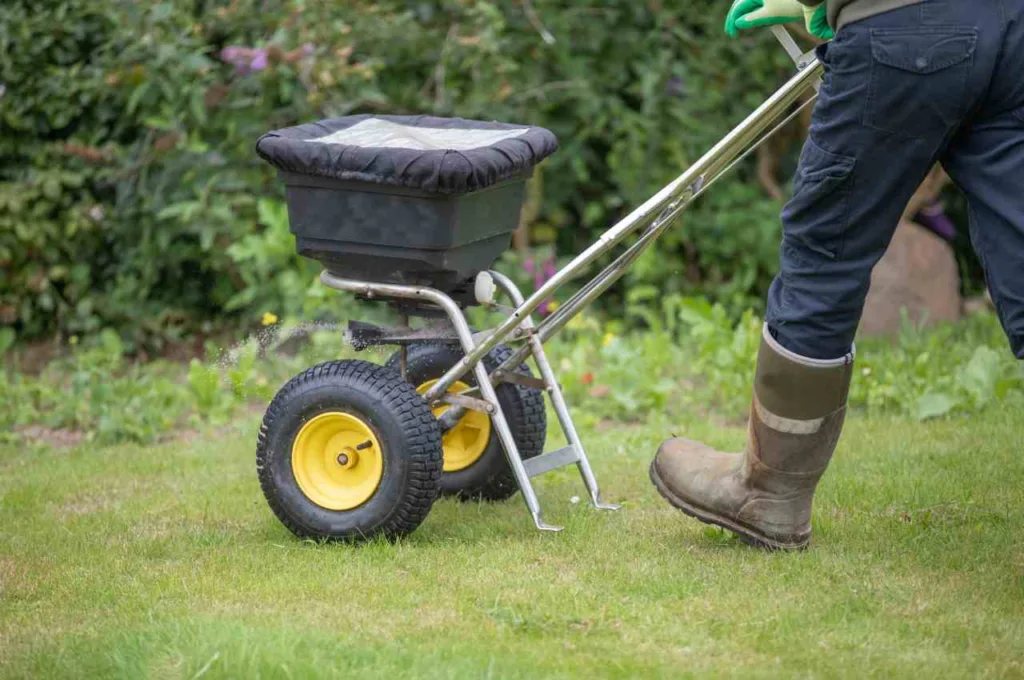
💨 Aerate Your Lawn Every Autumn
Another key approach to achieving a thicker, greener, healthier lawn is to aerate (or make lots of holes in) your soil every autumn.
I know many people who choose to skip aerating their lawn because, let’s face it, it’s not a thrilling job. But without aeration, your lawn’s soil will become compacted, and due to factors like foot traffic, heavy machinery, and natural settling, which restricts root growth and impedes the penetration of water, air, and nutrients. Poor root development means thinner, sparser grass growth – not ideal if your goal is to achieve a lush green lawn.
Aerating your lawn relieves soil compaction, which enhances root development, allowing the grass to access nutrients more efficiently. And you know what that means: a healthier, greener lawn with thicker, lusher growth.
You don’t have to spend a fortune on aerating your lawn, and it’s easy to do yourself, so no need to pay for a lawn care professional (unless you want to, of course). I use the Walensee Lawn Coring Aerator (< Amazon link) to aerate my relatively small lawn and it does the job perfectly.
🗓 Mow Your Lawn Regularly
Regularly mowing your lawn helps make the grass greener and thicker. You might have heard that getting your hair trimmed regularly helps it to grow faster, and the same goes for the grass on your lawn!
Regular mowing encourages grass to grow thicker and greener through a process known as the “stimulation effect.” When you mow your lawn consistently and at a decent height (more on that later, you remove the top portion of the grass blades, which prompts the grass to respond by producing new shoots and leaves.
This stimulates lateral growth, promoting a denser turf as the grass plant works to compensate for the loss of leaf on top. Plus, regular mowing has the additional benefit of preventing weeds from developing, so your grass gets a greater share of all the good stuff: available sunlight, nutrients, and water. It can allocate more resources to growth, leading to a thicker and healthier lawn with a lush green appearance.
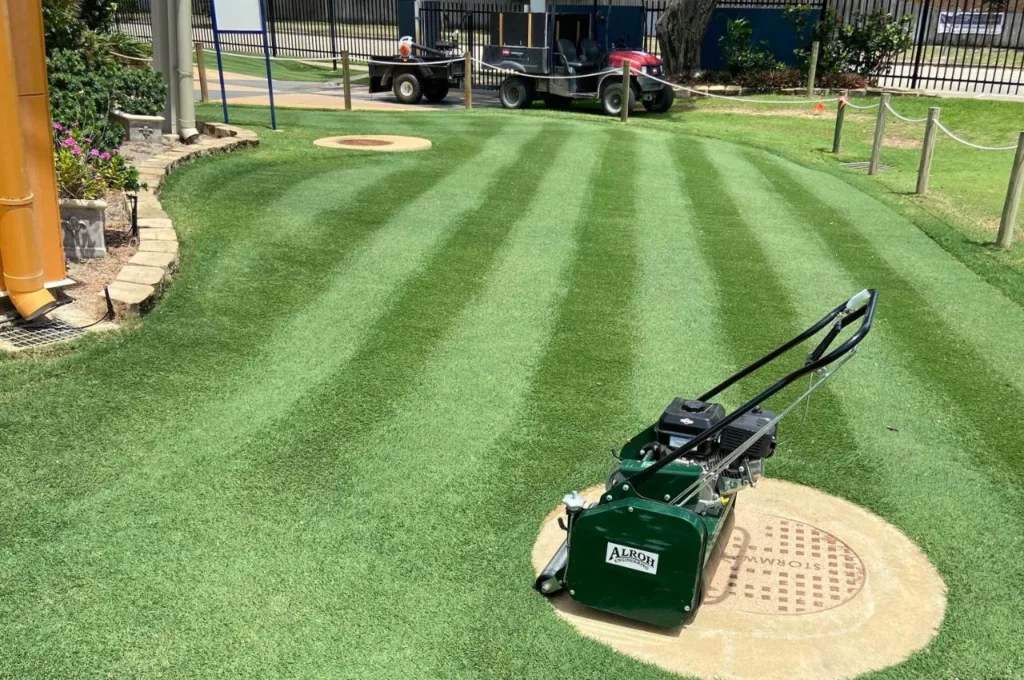
📏 Don’t Mow Too Short
A side note from the above, which is important enough to be a tip in itself, is this: don’t mow your grass too short.
If you cut too much off your grass (a practice known as gorily as “scalping”) you’ll put excessive stress on the grass plants and inhibit their ability to photosynthesize effectively. When grass is cut too short, it reduces the surface area of the leaves available for photosynthesis, which weakens the leaves, making them more vulnerable to environmental stresses.
Scalped grass also struggles to develop a robust root system because it doesn’t have the necessary energy reserves. As a result, the grass becomes thinner and less able to compete with weeds, leading to an overall unhealthy and less green appearance.
For that reason, if you want to maintain your grass’s health and vitality, I strongly advise that you avoid cutting any more than one-third of the grass blade length with each mow.
☘️ Spot-Treat Weeds And Moss
Take a long, close look at your lawn. What percentage of your lawn is grass, and what percentage is weeds?
Weeds like dandelions, daisies, and buttercups, as well as other unwanted green stuff like moss, are commonly found on lawns in the UK. These can affect your lawn’s greenness because they’re often not vibrant shades of green themselves (especially moss, which is yellowish-brown), and they also hinder grass growth, reducing its resources and possibly causing thinner growth as a result.
If you want to achieve the green, thick lawn of your dreams, my advice is to spot-treat all the weeds you can find on your lawn. Pulling weeds out of the ground, while the most time-consuming option, is usually the safest for a lawn and won’t kill the grass. Just make sure to get the entire weed, including the root, to prevent it from growing back. Check out our guide on how to safely kill weeds on your lawn for more information.
As for moss, I’ve found that the easiest way to kill it off is to use an autumn lawn feed with a built-in moss killer. This works to give your existing grass a boost of essential nutrients while also killing moss. You can rake the dead moss off your lawn within around 2 weeks of application.
Make sure to keep at these jobs. Weeds and moss grow back, so it’s best to give your lawn a once-over and remove any moss and/or weeds at least once per season.
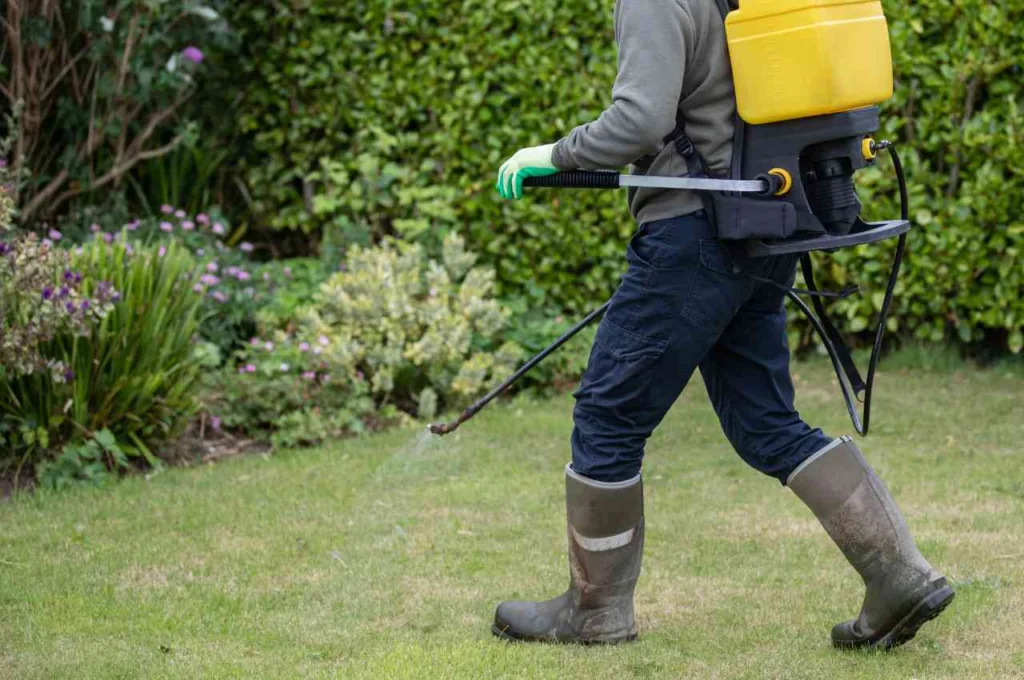
🍂 Manage Thatch
Thatch is the enemy of thick, green grass, so it’s also important to manage thatch if you want to achieve a greener, thicker lawn.
Thatch is a layer of dead grass clippings, roots, and organic matter that accumulates between the soil surface and the actively growing grass. Too much thatch buildup acts like a barrier, preventing water, air, and nutrients from getting into the soil. This restricts the grass’s access to essential resources, which can lead to a thinner and weaker turf with a duller green color.
Regularly dethatching your lawn can help you manage thatch levels and promote a healthier, thicker, and greener lawn. You don’t need any special tools for the job – a sturdy garden rake will do. I personally use the tradefirst 12 Teeth Garden Rake because it’s heavy-duty enough for dethatching purposes.
🌘 Reduce Shade Where Possible
It’s no secret that grass grows more poorly on shady lawns compared to lawns that get access to full sun. The reason for this is simple: grass needs sunlight to grow thick and healthy, so a lack of sunlight means that grass doesn’t have what it needs for this purpose.
I know first-hand that certain aspects of garden shade are out of your control. My lawn is in almost full shade during the day due to the shadow of my house, for instance.
However, if possible, try to reduce certain garden objects or plants that could be putting your lawn in complete shade. Cut back large trees and move children’s toys and garden furniture off your grass when it’s not in use. Even if this gives your grass a couple more hours of sunlight per day, it’ll help somewhat.
I also recommend seeding your lawn with a different grass type that’s better suited to shaded lawns. The best grass seed for shady areas contains grass varieties that are more resistant to a lack of sunlight and should grow densely even in partial or full shade.
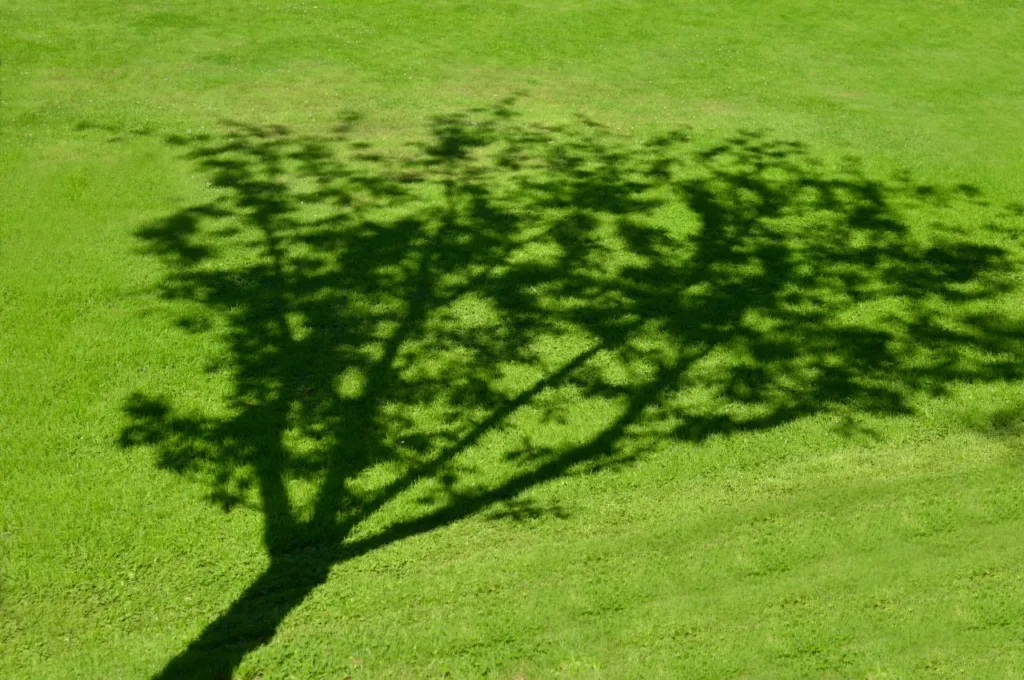
💦 Water (Only When Necessary!)
If you’ve noticed that your lawn looks yellow and sparse in the summer, that’s because it’s facing the opposite problem to the above: a lack of water and too much sunlight.
In the UK, we generally get enough rain that watering our grass isn’t essential. But during those few weeks of summer heatwave, I recommend watering your lawn once a day to prevent it from drying out and dying.
Make sure to water your grass deeply to encourage deep root growth – making them more resilient and efficient at absorbing water and nutrients.
✂️ Keep Your Mower Blades Sharp
Did you know that your mower’s blade might be preventing you from achieving a greener, thicker lawn?
Dull mower blades can affect grass quality by tearing the grass blades rather than making clean cuts. This tearing creates jagged, uneven edges on the grass leaves, which stresses them, leading to a brownish appearance and reduced growth. As the grass struggles to repair this damage, it diverts energy away from healthy growth, resulting in thinner and weaker turf.
So, make sure to sharpen your mower blades if you’re on a mission to achieve a green, thick lawn! I recommend sharpening your mower’s blade at least once per growing season. Check out our guide on how to sharpen a mower blade for step-by-step guidance.
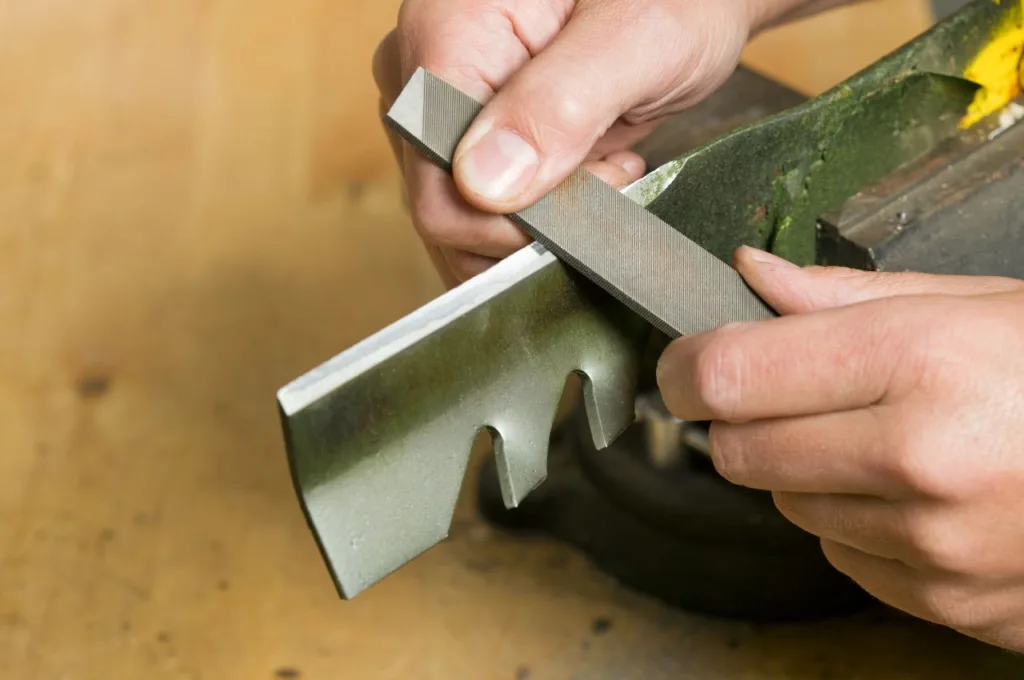
🏁 Final Word
I wrote this guide because I wanted to give you a thorough list of ways to achieve a green, bushy lawn, from methods I have tried and confirmed effective myself.
You’ll see that there are no magical shortcuts to a beautiful green lawn – rather, you need to put in a bit of effort across several different lawn care/maintenance tasks periodically throughout the year.
Hopefully, you’ve learned all the key ways to bring up your lawn standard, but if you’re looking for more thorough information, I recommend checking out our expert guide to essential lawn maintenance.
